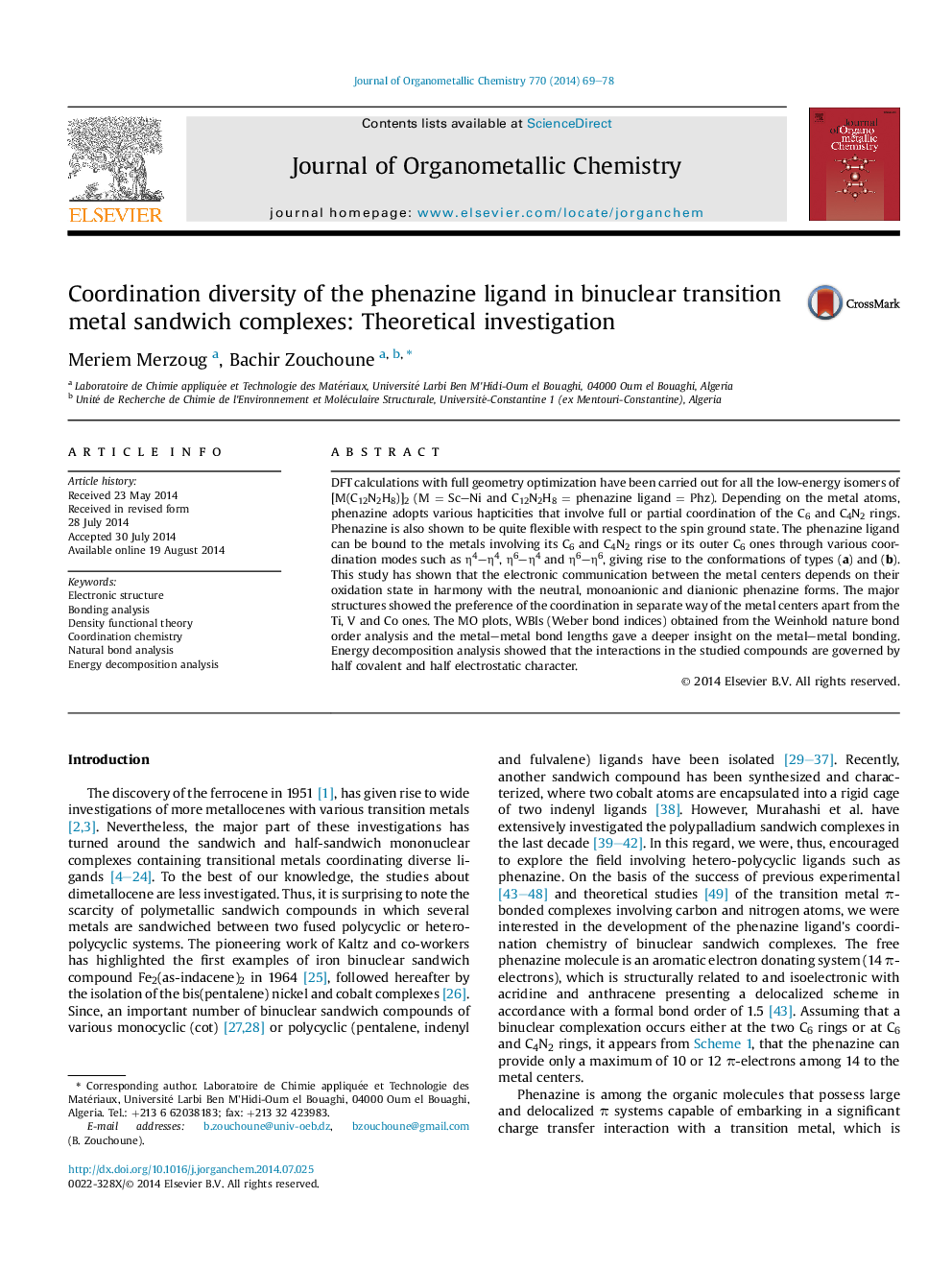| Article ID | Journal | Published Year | Pages | File Type |
|---|---|---|---|---|
| 1323649 | Journal of Organometallic Chemistry | 2014 | 10 Pages |
•The electronic communication between the metals depends on their oxidation state.•The phenazine behaves as neutral, monoanioc or dianionic ligand.•The aromaticity decreases the electronic communication between metal centers.•Strong π–π repulsions between the outer uncoordinated rings are expected.•The phenazine as an aromatic linker is suitable to promote metal–metal interaction.
DFT calculations with full geometry optimization have been carried out for all the low-energy isomers of [M(C12N2H8)]2 (M = Sc–Ni and C12N2H8 = phenazine ligand = Phz). Depending on the metal atoms, phenazine adopts various hapticities that involve full or partial coordination of the C6 and C4N2 rings. Phenazine is also shown to be quite flexible with respect to the spin ground state. The phenazine ligand can be bound to the metals involving its C6 and C4N2 rings or its outer C6 ones through various coordination modes such as η4–η4, η6–η4 and η6–η6, giving rise to the conformations of types (a) and (b). This study has shown that the electronic communication between the metal centers depends on their oxidation state in harmony with the neutral, monoanionic and dianionic phenazine forms. The major structures showed the preference of the coordination in separate way of the metal centers apart from the Ti, V and Co ones. The MO plots, WBIs (Weber bond indices) obtained from the Weinhold nature bond order analysis and the metal–metal bond lengths gave a deeper insight on the metal–metal bonding. Energy decomposition analysis showed that the interactions in the studied compounds are governed by half covalent and half electrostatic character.
Graphical abstractThe coordination mode and the electronic communication between the metals of the studied [M(Phz)]2 complexes depend on the phenazine arrangements and on the metal oxidation states. The C2v isomers are disfavored by π–π repulsions of the uncoordinated rings. The metal–metal bond orders are elucidated the Wiberg bond indices.Figure optionsDownload full-size imageDownload as PowerPoint slide
